Cool Roof Technology
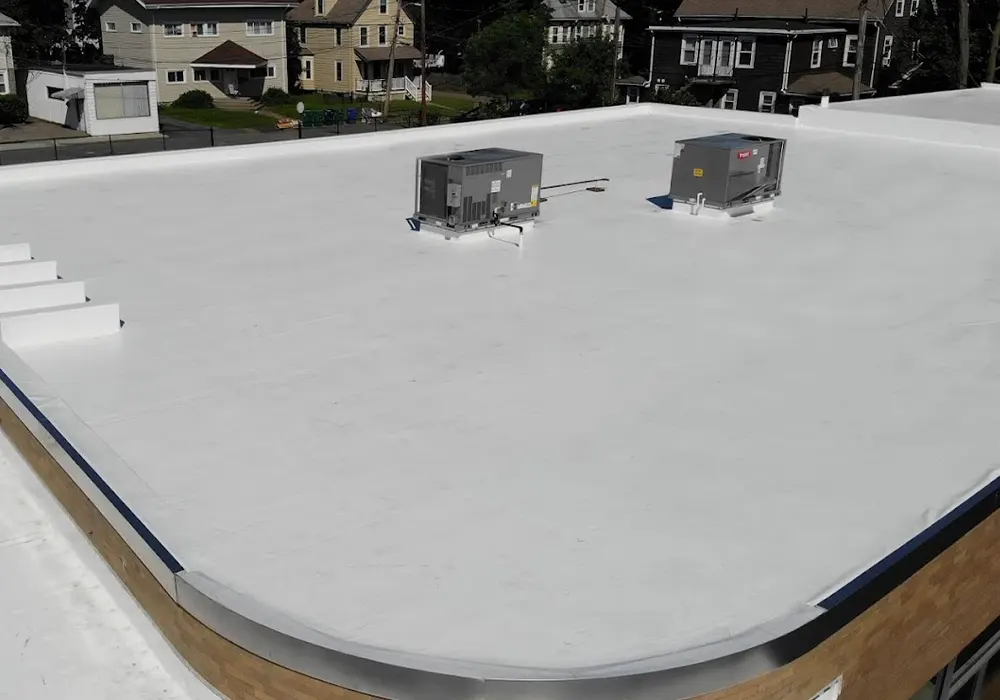
What is a Cool Roof?
A cool roof is designed to reflect sunlight and absorb less heat than standard roofs. The roof’s reflectiveness can be obtained through reflective paint, a white membrane such as PVC or TPO, or reflective roofing tiles or shingles. These cool roofs have the potential to stay much cooler (50°F+) than dark roofs, reducing the building’s carbon footprint, saving money on energy costs and reducing the urban heat island effect of the surrounding area.
In urban areas, dark or non-reflective roofs comprise 20-30% of the exposed area that contributes to the urban heat island effect. The other large contributing factors are lack of vegetation and non-reflective road surfaces. Switching to a cool roof not only addresses the non-reflective roof contribution, but a green roof can help combat the vegetation shortage.
BENEFITS OF COOL ROOFS
- Decreased air conditioning needs lead to reduced energy costs and extended life of HVAC system components.
- Cooler surface temperatures may result in a longer roof life.
- Reduce local air temperatures (known as the urban heat island effect)
- Less reliance on air conditioning systems lead to a reduction in toxic smog and power plant emissions like carbon dioxide, mercury, sulfur dioxide and nitrogen oxides.
- Lower energy usage can reduce peak electricity demand and help prevent power outages.
Types of Cool Roofs
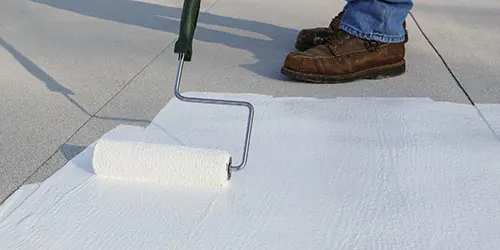
Roof Coatings
White or reflective roof coatings are commonly used to create a cool roof by applying the liquid membrane to an EPDM (black rubber) roof surface. These coatings resemble thick paint and have features that protect the roof’s surface from UV and chemical damage, and some offer added waterproofing properties.
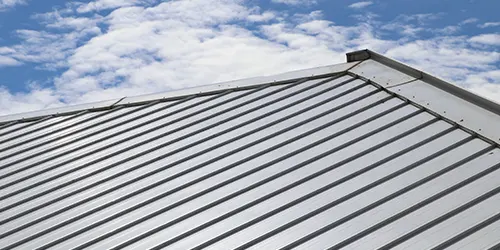
Metal roofs
Metal roofing is available with galvanized metallic or painted finishes, or granular surfaces. To ensure the roof serves the needs of your low-slope or flat commercial roof, apply a light or reflective paint to the surface. An effective coating will increase the roof’s solar reflectance and thermal emittance, making it a cool roof.
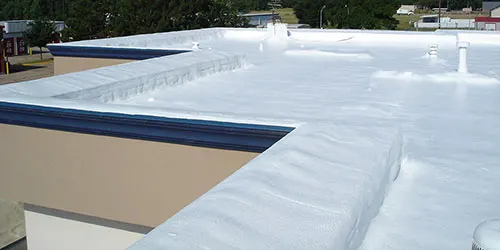
Spray polyurethane foam
As the name suggests, this material is an expanding foam that adheres to the roof surface in one large piece. Since this material is vulnerable to damage from moisture and UV light, a protective coating, typically a reflective coating, is applied to the roof’s surface. The coating serves a dual purpose - protection from moisture and reflection of UV light, offering a cool roof performance.
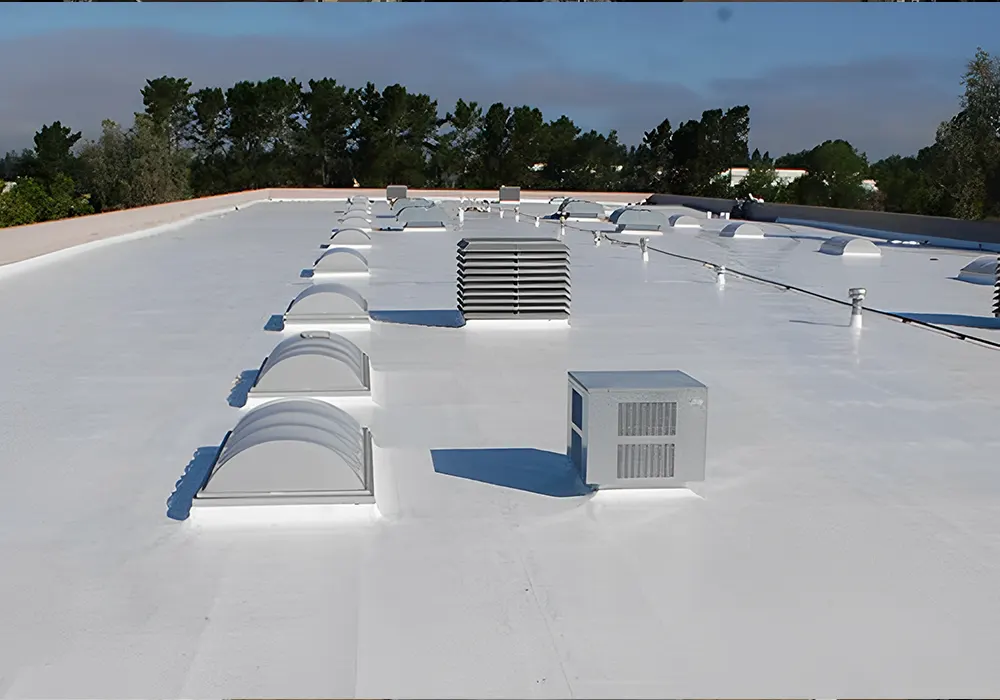
Single-ply membranes
Flat- and low-sloped roofs are commonly made cool by applying single-ply membranes such as TPO or PVC, which come in prefabricated sheet rolls that are rolled out onto the roof and fastened using chemical adhesives, mechanical fasteners or a combination of the two. Single-ply membranes are sometimes held into place with ballast (stones, gravel or pavers), relying on the weight of the ballast to hold the membrane down.
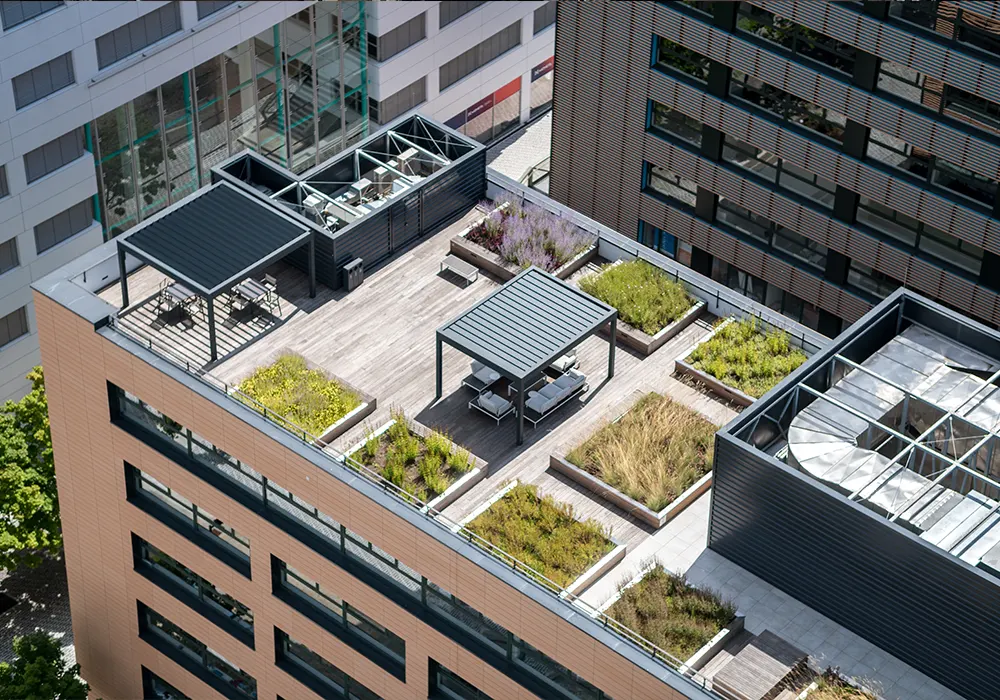
Green Roofs
A green roof is an ideal solution for flat-roofed urban-area commercial buildings and can feature a basic plant cover or any type of garden. Some commercial structures possess a green roof that is used to cultivate vegetable gardens, flower gardens, shaded seating areas, nature paths or patio areas.
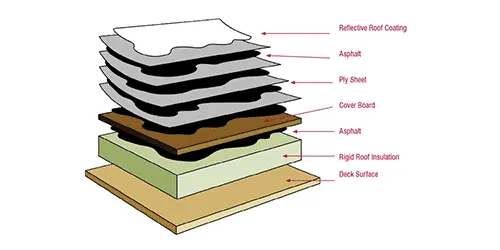
Built-up Roofs
A built-up roof is a multi-layered roof system that includes a base layer, fabric reinforcement, and a dark protective surface layer. These can be altered before or after installation:
- Before installing, swap out the dark gravel in the top layer for reflective chips of marble or slag.
- Swap the whole top layer for reflective granules or coating.
- After installing (or on an older roof that’s in otherwise good condition), apply a cool roof coating to the surface of the roof.
Cost of a cool roof vs. energy cost savings
While a new cool roof does not always cost more than a standard roof, converting an existing roof can be cost-prohibitive in certain situations. To determine the costs of an installed or converted cool roof, it’s best to meet with your roofing contractor to go over the costs involved, including materials, labor and ongoing maintenance.
Cool roofs can pay for themselves over time by saving money on energy costs, tax rebates/incentives, longer roof life and/or potential for scaled-down HVAC systems due to the decreased need for heating and cooling. To help estimate your potential energy savings, consider checking out this cool roof calculator.
Finally, cool roofs are encouraged by federal, state and local initiatives, including the EPA, which incentivizes the implementation of a cool roof through its Energy Star Roof Products Program and similar state-specific programs. What’s more is that cool roofs are required to be warrantied comparatively or better than standard non-reflective roofing. That means if your cool roof fails prematurely, you’re likely covered under a very inclusive warranty for most events.
Cool roof materials also help a commercial building to obtain LEED certification, which indicates that a structure is contributing to building a safer and more sustainable community.

